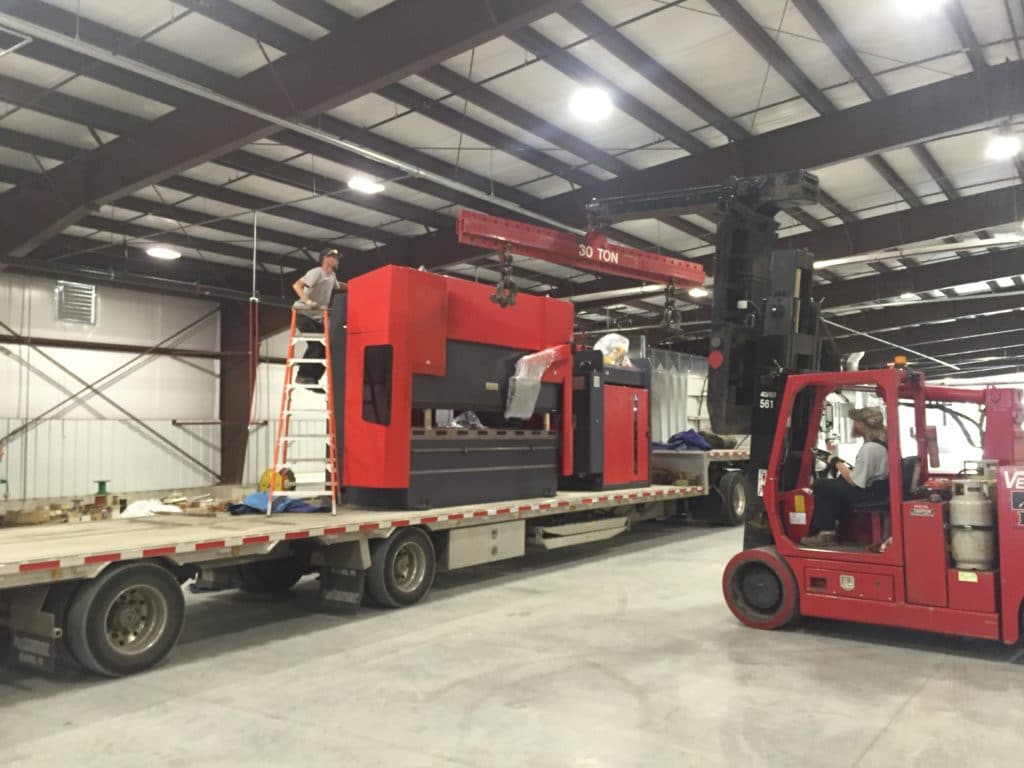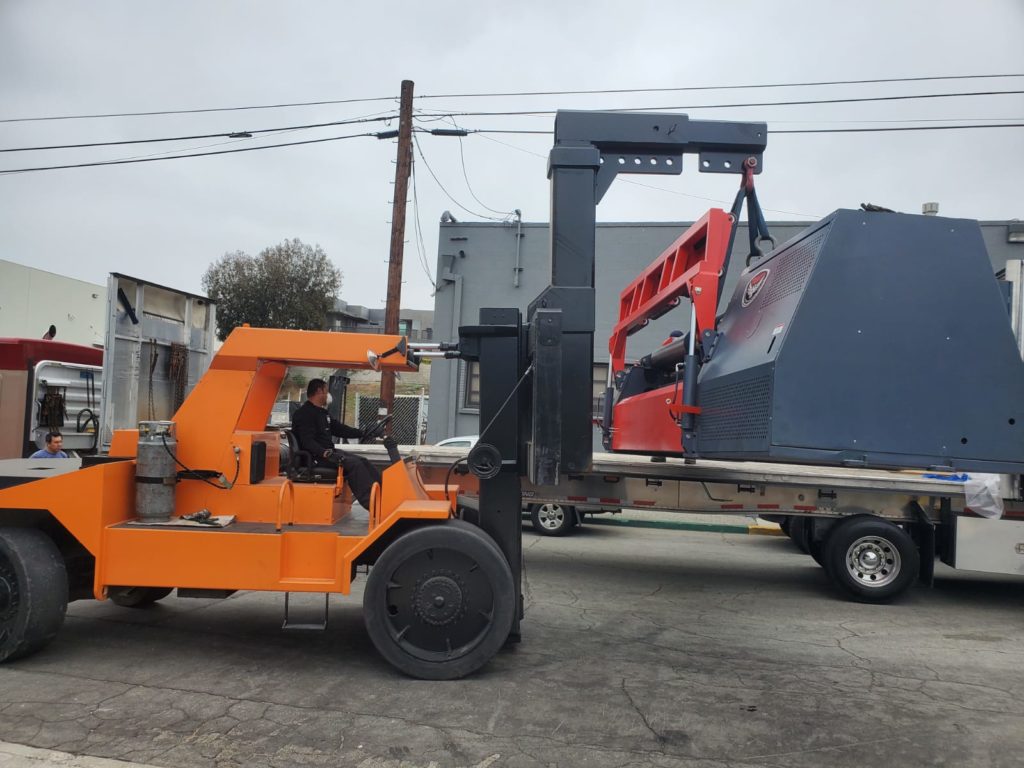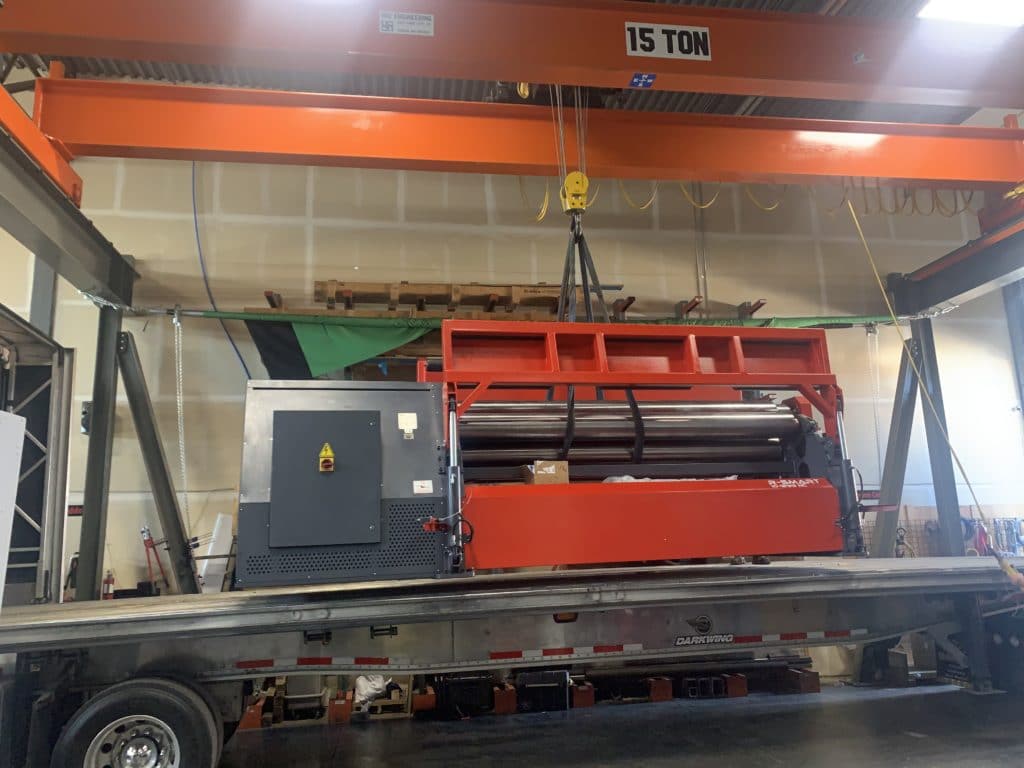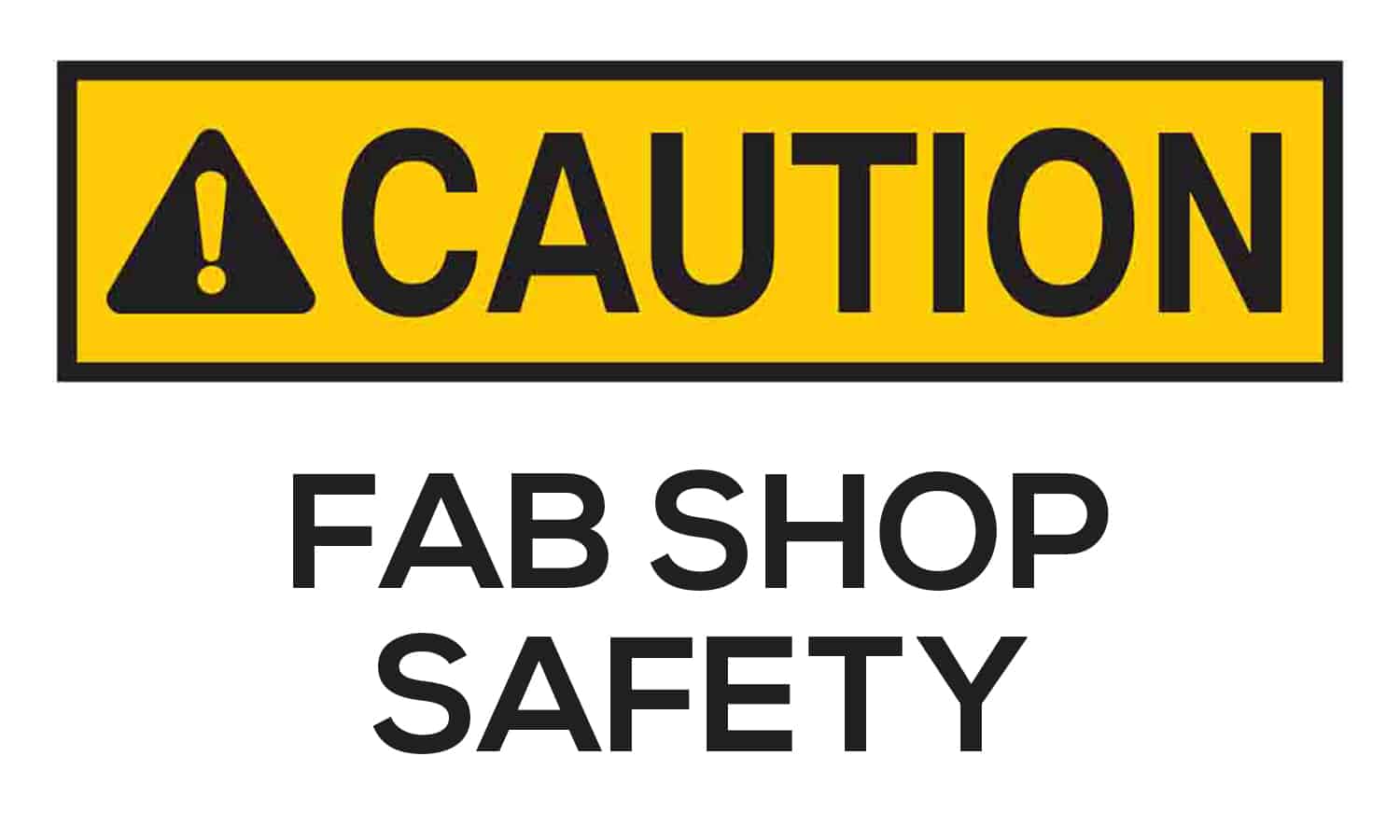Material Handling Equipment—Easier, not Necessarily Safer
When a production shop gets advanced enough to automate the loading and unloading of parts and other material handling functions, a big load is taken off of the workers. While material handling machines may make work easier and faster, they don’t necessarily make it safer. In fact, knowing that a device has taken over performing a common chore can make some employees a little complacent about being careful around such equipment.
While some material handling products are stationary, such as pallet racks and shelving to hold metal blanks or finished parts, most involve some sort of transport of materials. And a conveyance that moves things—surfboards and toboggans notwithstanding—generally includes moving parts. The first rule of shop safety should always be: If it moves, be careful!
It’s a wise idea to catalog every piece of material handling equipment in a shop and list out potential injuries and accidents that can happen with each of them. Then providing training to employees on safe habits around each mechanism, including specific scenarios that could occur, should significantly lessen mishaps.

Some common pieces of equipment and their safety concerns include:
- Conveyors. Practices like sitting, standing or walking on conveyors should be prohibited under company policy with some sort of discipline attached. Things like clothing, hair, jewelry, hands and feet can get caught in pinch points and other places that wouldn’t adversely affect a piece of sheet metal but can do serious and permanent damage to a human being. Only those trained in the use of the conveyor should be near it. Make sure that all guards are always kept in place and that it is locked-out/tagged-out when maintenance on it is performed.
- Cranes. Cranes are more flexible than conveyors because they can transport materials places that a conveyor doesn’t run. That is also their greatest source of danger, however, because a crane might be positioned where a shop worker isn’t expecting it to be. Employees need to be taught to be especially attentive in areas where cranes can operate, even if it is a nook or corner where it rarely goes. No one should ever walk directly underneath a load, no matter how secure it appears. Injuries can even occur by walking into a low-hanging hoist, so crane-awareness is an essential attribute for all shop personnel.
- Hand Trucks. The task of moving materials that were too heavy or awkward to safely lift became a lot easier once the hand truck was invented. Hand trucks (or dollies, as they are often called) can reduce injuries to employees and damage to materials, but only if they are operated correctly. Users should make sure they don’t overload the capacity of the hand truck, or stack materials too high, obscuring vision. Some hand trucks are designed for specific loads (such as rounded ones to carry barrels) and should only be used for their designated purposes. The center of gravity of the load should be kept low by stacking the heaviest items on the bottom.
- Pallet Jacks. Some companies unfortunately don’t see the need of offering any type of training to employees tasked with operating a pallet jack, but misfortunes can and do easily occur with this fairly simple device. Overtaxing the capacity of a pallet jack or operating it too fast can lead to damage or accident. Feet should be kept clear of the machine and steel-capped boots should always be worn by operators. Pallet jacks should always be pushed and never pulled, and an employee should always go in reverse down an incline to keep control of the load.
- Forklifts. One of the most helpful instruments in a shop environment is the forklift, but it can also become the most hazardous piece of material handling equipment if used improperly. Operators must keep loads secured, balanced and as low as possible and not drive excessively fast. Bystanders should stay out of the blind spots of drivers and employees should never stand on a fork. In-depth training is crucial for all employees using a forklift and OSHA requires each operator be certified every three years.
All material handling machines should be routinely inspected and tested, and operators should look for wear or damage before each use. Providing training to employees to help them always be particularly aware of their surroundings can greatly reduce workplace accidents involving material handling equipment.

Essential Material Handling “Equipment”—Your Staff
Keeping all material handling machines in good working order won’t matter much if shop management neglects the most important material handlers: their employees. Even with a fully automated facility where everyone stays safe around the equipment, some items will still be lifted and moved by hand, a very common source for injury in the workplace.
From serious vertebrae damage to minor sprains, the improper lifting of loads by employees cause many injuries that can be avoided. Seemingly simple movements that don’t cause much stress can also lead to long-term damage if they are repeated frequently enough.
Employees should be taught to lift items around the shop—and elsewhere—correctly, with a refresher being repeated at least annually during safety training. Employees who are seen performing lifting movements in unhealthy ways should be gently reminded of potential damage they are likely causing themselves.
The oft-repeated adage, “lift with your legs,” is a critical principle of back safety. The person should keep their back straight and not bend over when picking up a load. They should instead squat with hips and knees bent when moving downward to pick things up. Loads should be held as close to the body as possible while lifting back up with the legs, taking care not to twist the torso much while rising or walking with the load.
Proper balance is important when physically carrying an object. If the person keeps their feet approximately shoulder width apart, such a stance can minimize the chance of losing balance while lifting and carrying. If two or more individuals are needed to carry an item, clear communication to coordinate their movements will help them keep the load balanced between them.
The company should issue appropriate personal protective equipment (PPE) to employees that takes into account the material handling procedures along with the machinery operation and work processes. If the machine’s operator doesn’t need heavy gloves for running a CNC panel but also helps load or adjust the metal, he or she should have a pair of appropriate gloves nearby and be required to don them during that portion of production. Likewise, steel-toed safety shoes and proper eye protection should be worn by everyone participating in material handling, even if not needed for other parts of the process with which they might be involved.
Keeping work areas free from obstacles—and well lit—will also help protect the safety of those who have to carry objects, as well as minimizing delays and potential damage when cranes, forklifts and other material handling machines have to traverse the space.

Material Handling Safety Training
Material handling safety should be included with all other topics in company policy listings, shop safety manuals and safety training meetings. Every precaution in the world could be taken in training employees in machinery safety, yet injuries could still easily occur once they leave the machines to move the parts, whether via equipment or by hand. Safety in all aspects of company operation must become second nature to all staff through the leadership of senior management working to incorporate it into the very culture of the company.
Training in all aspects of safe material handling—policies, procedures, safety equipment and awareness of surroundings—should be frequently repeated. Management may even wish to implement an annual certification for employees regarding their understanding of material handling equipment, procedures, risks, policies and legal requirements.
As employees and management labor together to make the entire workplace safe in all operations, every aspect of the company will improve—health, morale, production and profits. Healthy workers always contribute to a healthy bottom line.







